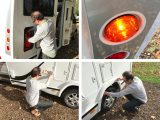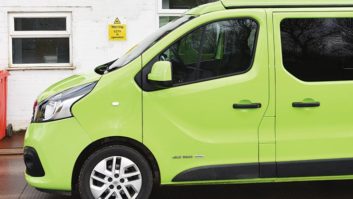With spring just around the corner, those of us who cannot use our motorhomes all through the year can start thinking about recommissioning our holiday accommodation.
Bodywork, mechanicals and batteries, plus the water and gas systems, will need to be checked over.
Even if you do use your motorhome all year round, now is still a good time to do some basic checks prior to the season starting in earnest, because it reduces the chances of something going wrong when you’re miles away from civilisation.
Words of wisdom
A good few years ago, fellow Practical Motorhome columnist Gentleman Jack Bancroft gave me a great piece of advice: once a year take everything out of your motorhome. Anything you find that you haven’t used in the last year is almost certainly not required.
In the process of emptying your ’van you will look into all the nooks and crannies that you don’t see very often. You’ll notice if there are any damp issues arising or cupboard doors coming loose.
The other big benefit of removing things you don’t need is that you’ll recover some of that all-important payload.
Of course, if you have to hibernate your motorhome over winter, the sensible thing would be to empty it first and then restock it at the start of the new season.
How to clean your motorhome
Starting with the outside, give the ’van a thorough clean – and there is much debate among motorhome owners about whether or not to use a pressure washer.
My belief is that it’s okay on a wide spray pattern and not held too close to the bodywork. Be extra careful around doors, windows and fridge vents, though.
Once your ’van is nice and clean you can then give the bodywork a good, close inspection.
Check all joints and seals for condition and if you have doubts about any areas, then get expert advice before you attempt any repairs.
I’ve seen well-meaning owners try to reseal joints with bathroom silicone sealant, but this is worse than not doing anything in some respects. For a start, the silicone sealants don’t generally have good adhesion, they’re rarely UV proof, plus they can make it difficult for the proper sealant to adhere when it’s applied later.
Don’t be tyred out
Check the tyres on your motorhome for condition, age, pressure and tread depth.
I know this is one of my pet subjects, but they really are one of the most important items on a ’van and it never ceases to amaze me how many motorhomes are trundling around on old tyres that are under-inflated with cracking sidewalls – it’s a recipe for a blowout.
Lift the bonnet and check your fluid levels, oil, coolant, washer fluid, power steering fluid and brake fluid. It’s also a good time to check that all your road lights are still functioning properly.
If I was laying up a motorhome for a couple of months or longer, I would remove the leisure battery/batteries and keep it/them on a maintenance charger somewhere safe.
Leaving a battery connected to the motorhome with no means of charging for an extended period is a great way to kill it. Obviously if you have solar charging it’s slightly different, but it’s worth checking the battery.
Are you running clean?
The water system will need to be thoroughly cleaned before being brought back into service, especially if you drink water from your on-board tank. You’d be surprised how much muck can accumulate over a year.
How to clean the system will depend on the setup of your particular motorhome. If yours has an inboard tank it probably has an access point on top of it. This will enable you to get a hand inside to clean away any algae that may have formed.
Give it a good clean and rinse it thoroughly. Close all the drain points in the system, and then you can descale and sterilise it.
Truma’s Aquastar is a great product for this. It comes in two packs, the first of which is a descaler/cleanser, the second is a sterilizer.
Alternatively, a couple of litres of white wine vinegar added to the tank, then filled with fresh water, will do a similar job.
Once filled, drive it around a bit to mix it up then run the water pump until you have a steady flow from all taps in both hot and cold positions, then run the water heater for 10 minutes or so.
Leave it to stand for a couple of hours then run the boiler for a second 10-minute burst. Let it stand again for 24 hours before flushing the whole system out with lots of fresh water. Your water system should now be as clean and fresh as the day it was first installed.
Cooking on gas?
Now your water system is clean and fresh you can try out your boiler and all the other gas appliances to make sure they all still work as intended.
Be careful when cleaning the hob burners, because excessive use of cleaning products can block the burner outlets and excessive water can cause corrosion in the jets, which will lead to poor burning and the production of very dangerous carbon monoxide (make sure the detector still works). Only clean hob burners with a slightly damp cloth.
Once your tests are complete, gas bottles should be turned off – a fairly obvious point you might think, but I see a surprising number of motorhomes where the gas bottles are left permanently on unless they are actually being changed.
At the very least there is a chance of your gas leaking away. At the worst it could become a fire risk.
So now you can reload all your bits and bobs back into your motorhome ready for the new season. And let’s make it the best yet!
A keen motorcaravanner, Practical Motorhome’s technical expert Diamond Dave runs his own leisure vehicle workshop. Find out more at Dave Newell Leisure Vehicle Services.
Doing some basic checks reduces the chances of something going wrong when you’re miles away from civilisation









